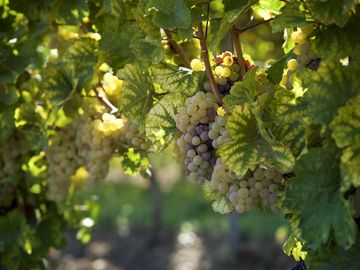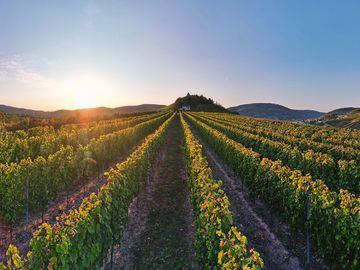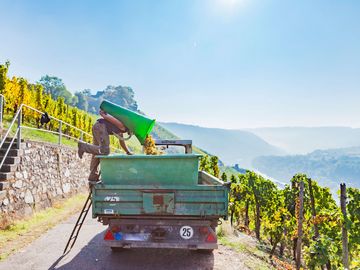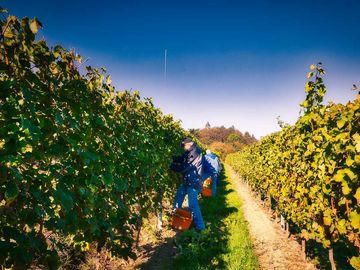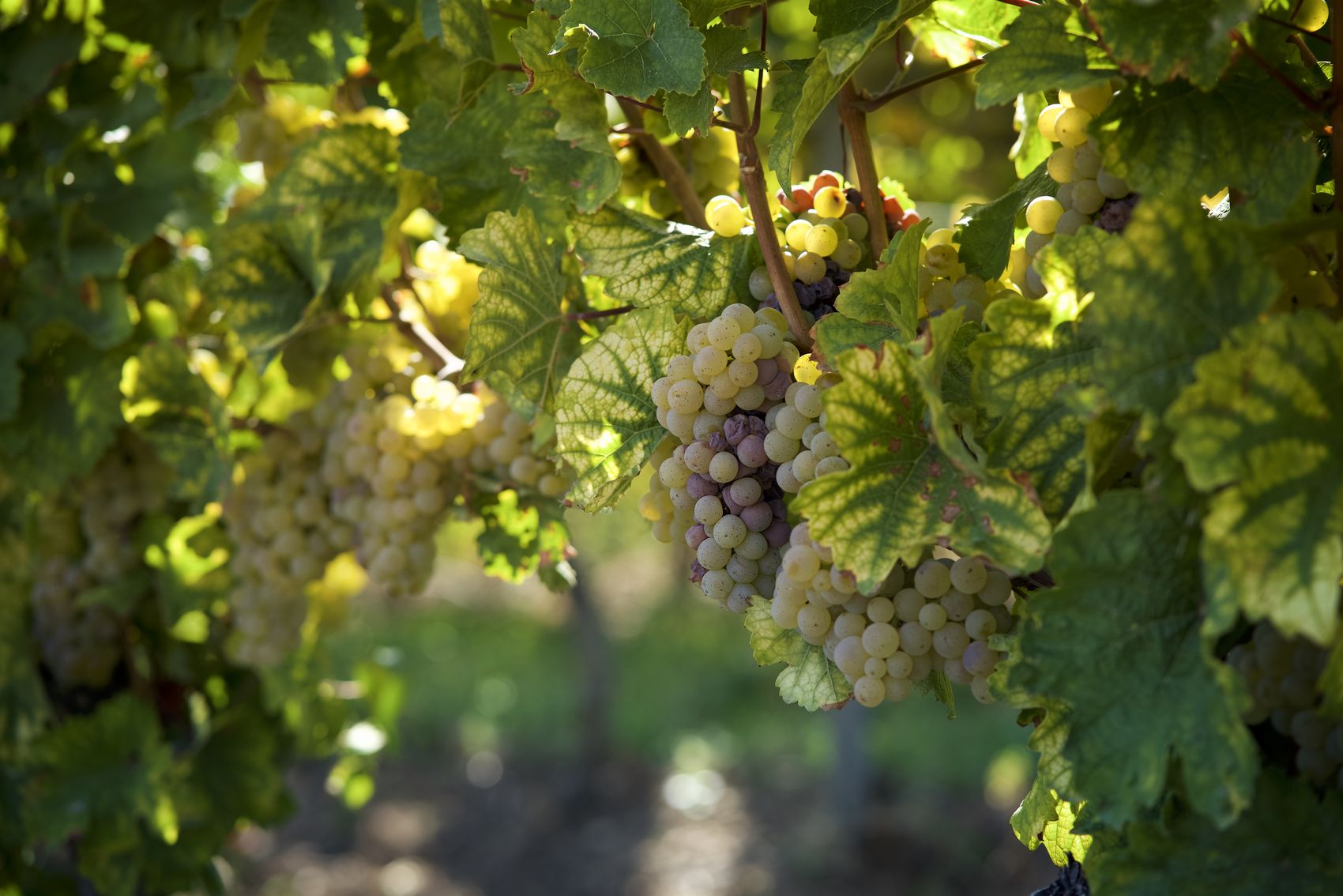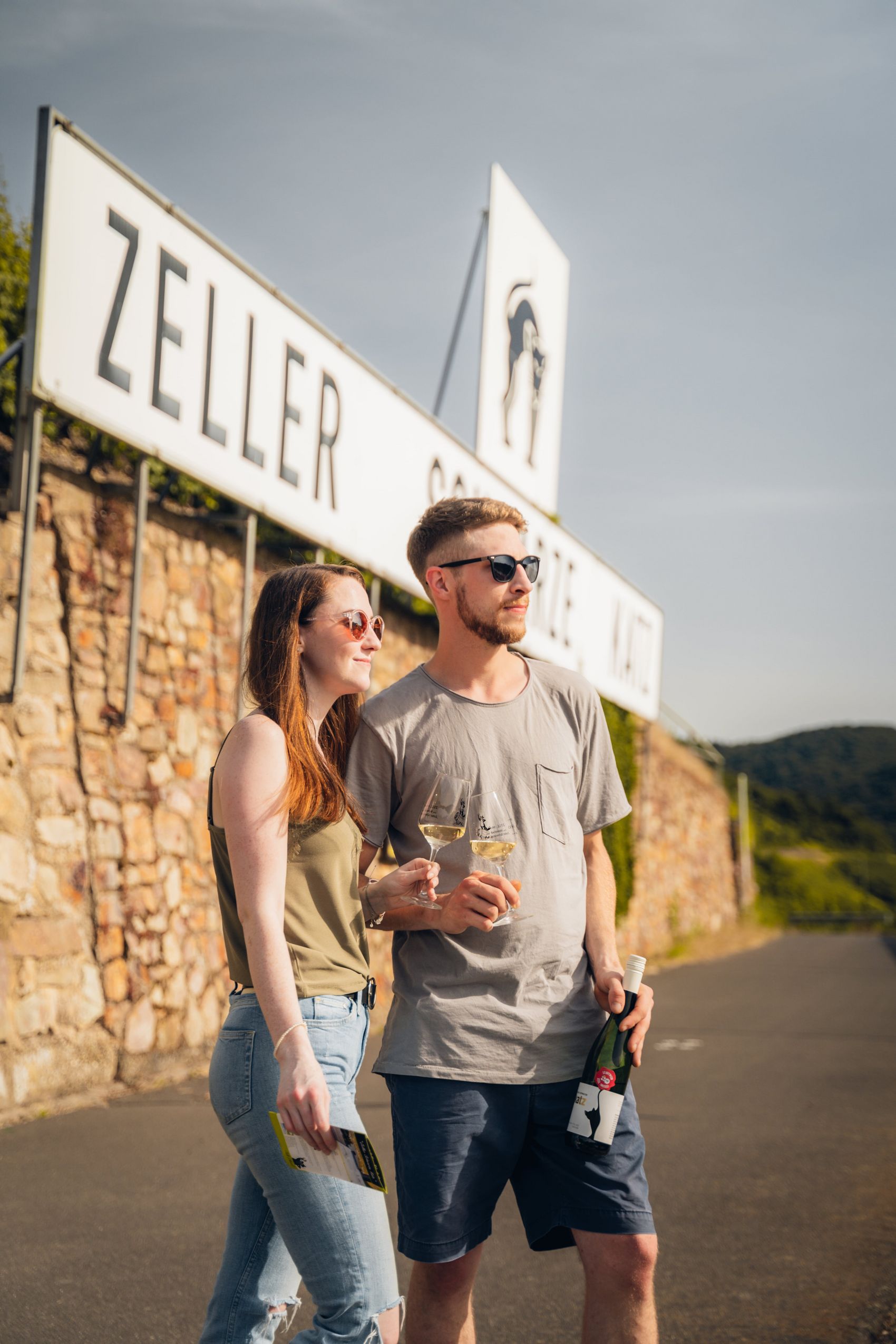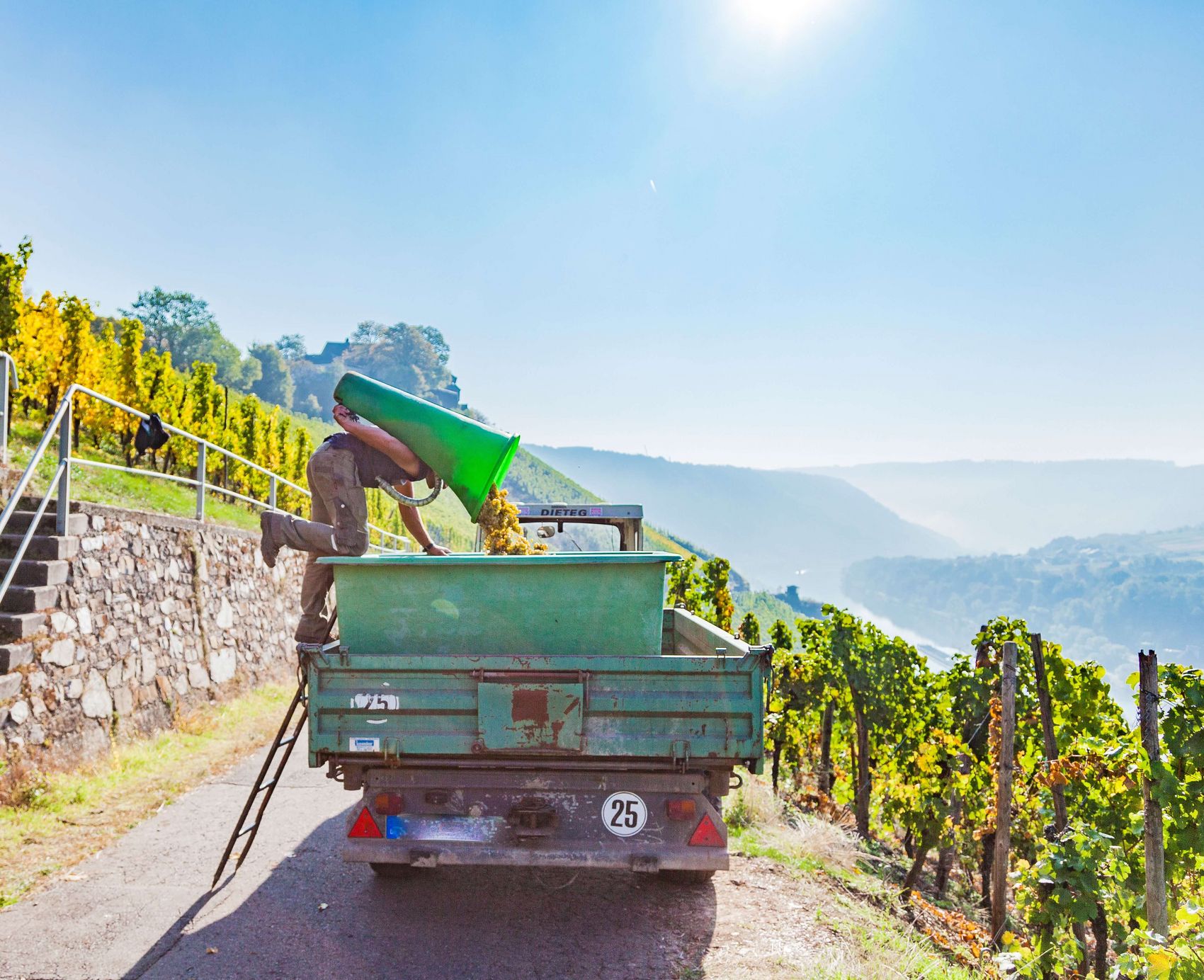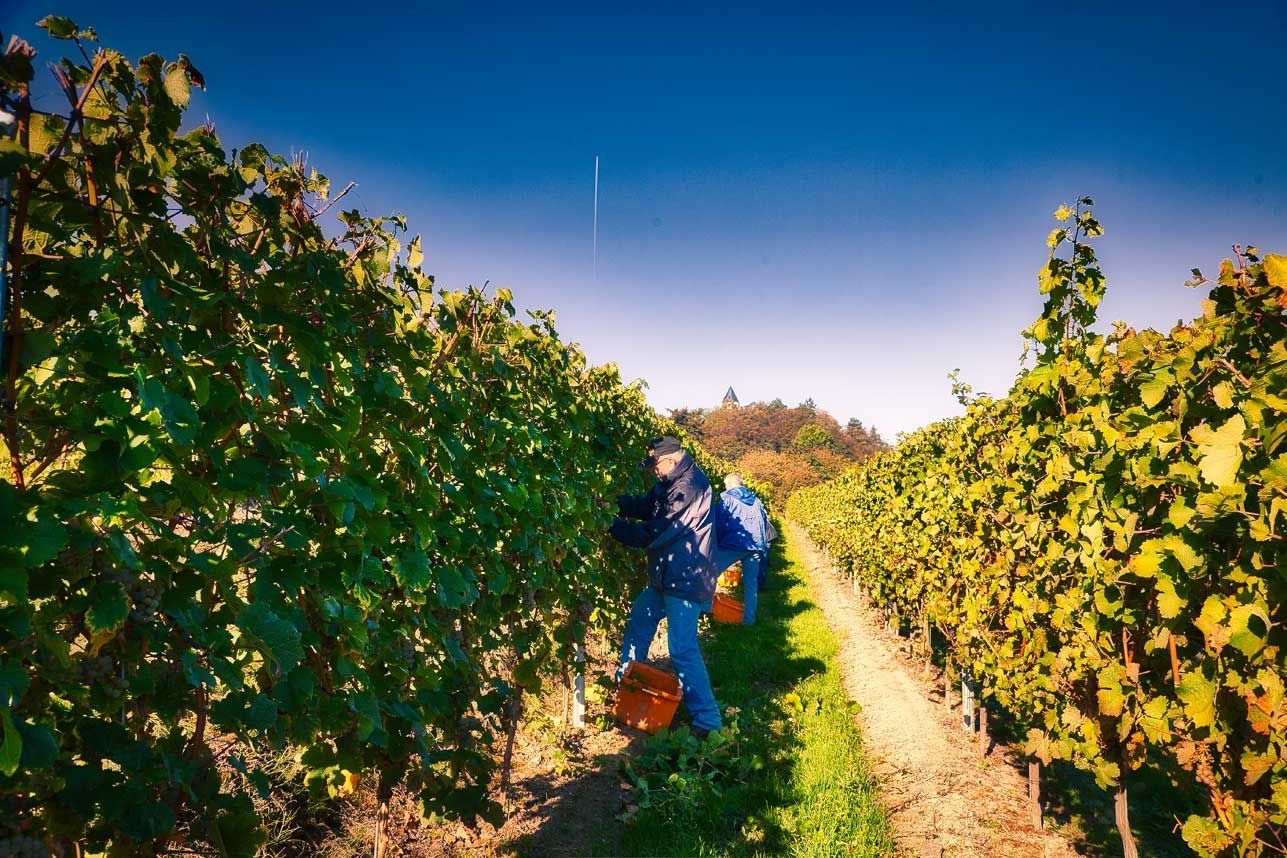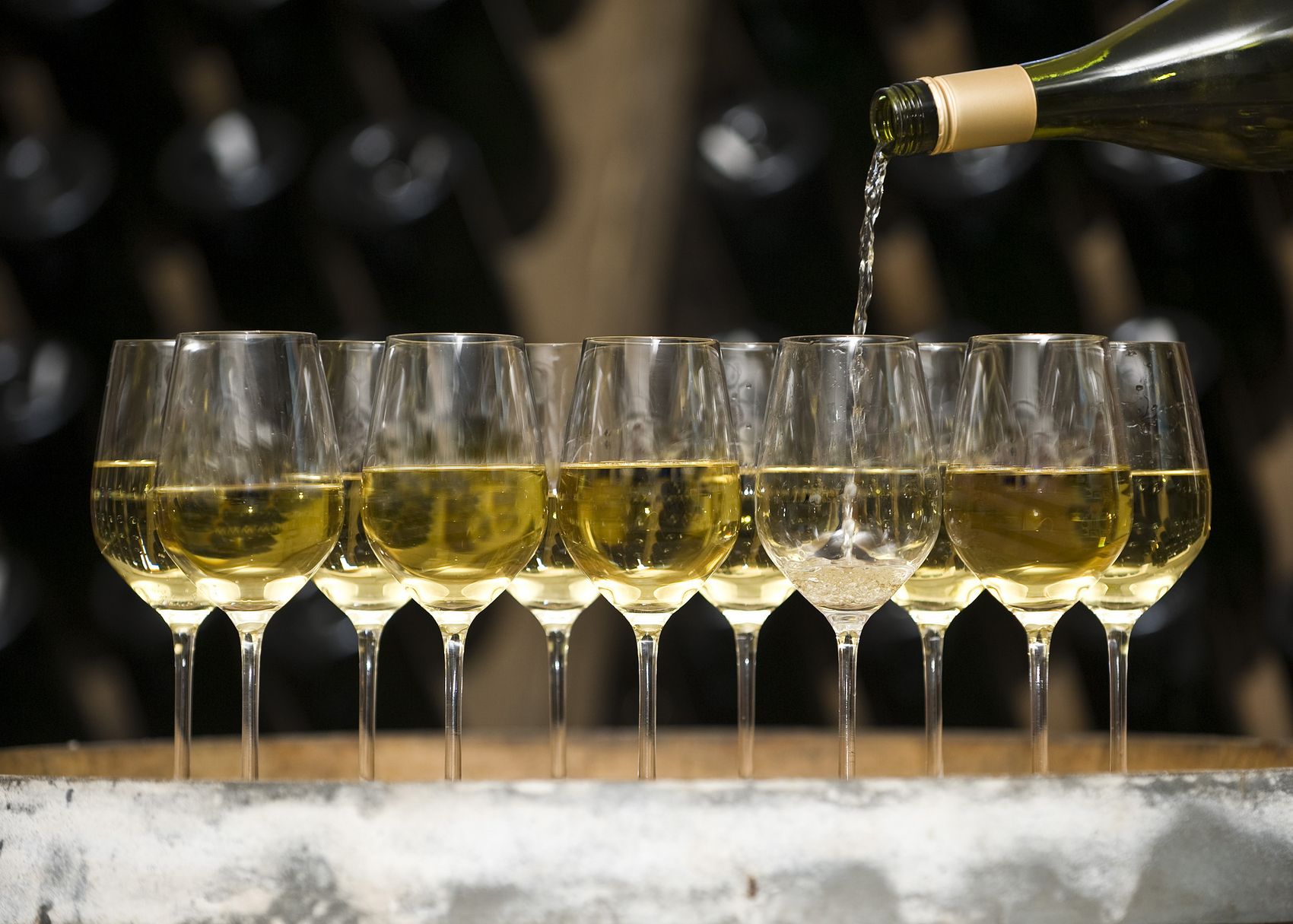Winegrowers were already pressing their grapes on the Mosel in ancient times. They had come in the wake of the legions conquered parts of the Germanic territories. Nearby Trier was a cosmopolitan city - the demand for wine was correspondingly high. A drink that the Romans already appreciated.
Do you know…
...since when viticulture has been practised on the Mosel?
Winegrowers were already pressing their grapes on the Mosel in ancient times. They had come in the wake of Caesar's legions, who had conquered the Mosel region in the Gallic Wars course. Trier, the first city in Germany, developed into an imperial residence and cosmopolitan city - the demand for wine, a beverage already highly valued by the Celts and Romans, was correspondingly high. So you can experience 2,000 years of wine culture on the Mosel.
...how many vineyards are there on the Mosel?
The wine-growing region is divided into six areas according to wine law: Cochem Castle (Terrace Mosel from Koblenz to Zell), Bernkastel (Middle Mosel from Briedel to Trier), Saar, Ruwer, Upper Mosel (Mosel from Trier to the border of the federal states of Rhineland-Palatinate and Saarland) and Moseltor (Mosel area in Saarland to the German-French state border). In terms of landscape, the Upper Mosel and Mosel Gate form a single region, the "Southern Wine Mosel". These areas are subdivided into 19 large vineyards and around 520 individual vineyards. It's not easy to keep track of them all...
...what percentage of the wine-growing area's vineyards are on steep slopes?
About 40 per cent of the vineyards on the Mosel, Saar and Ruwer are located on the river valleys' steep slopes. Vineyards with an incline of more than 30 per cent are considered steep slopes. With about 3,500 ha of vineyards in steep slopes, the Mosel region is the largest steep slope wine-growing globally.
...what the steepest vineyard in Europe is called?
The Mosel is home to the steepest vineyard in Europe, the Calmont between Bremm and Ediger-Eller, with a slope of up to 68 degrees. Would you like to climb the Mount Everest of the Mosel vineyards? The Calmont via ferrata leads you along narrow paths, over ladders and on steel cables, along rocky edges through the vineyard and rewards you with a breathtaking view of the Mosel.
...which grape variety is the absolute favourite of Mosel winemakers?
The Mosel wine-growing region is dominated by white wine. More than 91 per cent of the vineyard area is planted with white varieties. Riesling is the most crucial grape variety on the Mosel, Saar and Ruwer with 62 per cent. In the Saar and Ruwer Valley areas, its share is much higher than in the region as a whole, at around 83 and 88 per cent. The "queen of white vines" is particularly well suited for cultivation in the steep slate slopes of the Mosel, Saar and Ruwer river valleys. Due to its very long ripening phase, it produces mineral, finely fruity, elegant and long-lasting wines here. Müller-Thurgau, Pinot Blanc and Pinot Noir, and the Mosel speciality Elbling are also essential grape varieties in the region. Have you already found your personal favourite among the grape varieties? You can get to know the whole variety of Mosel wines at a wine tasting.
...which quality levels with a predicate are distinguished in wine?
Kabinett is the name of the first level of Prädikat wines, followed by Spät- and Auslese. For Kabinett, the ripe grapes are harvested earlier, with less must weight, as this predicate is characterised by wines with low alcohol content and a new acid structure. Spätlese wines are made from highly ripe grapes, while Auslese wines are made by "picking" individual berries. Rarities are the Beerenauslesen and Trockenbeerenauslesen, which are made from dried berries. Here the noble rot, botrytis, plays a vital role because this fungus attacks the grapes in autumn and deprives them of water. Fruit sweetness and other ingredients are concentrated. Ice wine is made from grapes frozen on the vine so that the water content in the berries is also reduced.
...why Mosel wines taste so mineral?
The answer lies in the soil composition, which is particularly characteristic of Mosel wine. On the Mosel, this is dominated by a slate. These slate soils store heat during the day and rerelease it at night. The fine weathered slate is always rotting and provides the ground with minerals such as potassium, calcium and magnesium. The vine roots transport these minerals into the fruit. This is why the wines from the slate vineyards on the Mosel taste particularly spicy and mineral.
...how the pearls get into the sparkling wine?
Sparkling wine is produced when a second fermentation takes place in the wine. In order to achieve this, yeast is added to the base wine, which converts the wine's residual sugar into alcohol. This also releases carbonic acid, which remains in the sparkling wine: this is how the delicate bubbles are created, giving sparkling wine its character.
The sparkling wine must be stored on the yeast for at least nine months; for crémant, twelve months of yeast storage are prescribed. The bottles are riddled in unique riddling towers to remove the yeast from the raw sparkling wine. The yeast, which had initially settled on the wall of the lying bottle, thus moves into the bottle's neck. In order to remove the yeast, the neck of the bottle is frozen. When the crown cork is then removed, the ice plug with the yeast shoots out of the bottle due to the bottle's carbonic acid pressure. This process is called disgorging. The following dosage - the addition of more or less sweet wine - replaces the liquid lost during disgorging and defines the finished sparkling wine's flavour.
...which wine is your personal favourite?
YES? Then we are happy that you have already found your favourite wine!
NO? What are you waiting for? Dive into the beautiful world of Mosel wine! Here you are sure to find a wine that suits you and make you go into raptures. For example, at a wine tasting in one of our vinotheques or wineries. Here you can get to know the winemaker personally and find out first-hand how much work goes into a bottle of wine. Or maybe you'll discover it over dinner in a restaurant or at one of our events. There are more than enough opportunities here on the Mosel... And if it then proves itself at home at the kitchen table and makes you just as happy as it did during your Mosel trip, then you know you've found it: your favourite wine!
Through the ages
The Celtic inhabitants of the region already appreciated wine as a luxury food around 500 BC. Around 50 BC, Roman legions conquered the Mosel region and founded Trier in 17 BC. The increasing demand of the city's growing population led to planting vineyards on a large scale. This marked the beginning of the era of viticulture on the Mosel. After the end of the Roman Empire, the monasteries, as the largest landowners, took on a central role in further developing viticulture. In the High Middle Ages, the Cistercian monks from Burgundy brought their wine-growing knowledge to the Mosel region and gave the area a considerable head start.
Early quality assurance
The great importance of viticulture for the region is evidenced by the fact that the last Elector of Trier, Archbishop Clemens Wenzelslaus of Saxony, decreed measures to promote quality viticulture in the 18th century: he had inferior vines grubbed up and replaced with better varieties, especially Riesling, a decision that still shapes the region today. After the French Revolution, church estates' expropriation brought an end to monastic viticulture. At the same time, an early form of wine tourism emerged: English artists were attracted to the Mosel by the dramatic landscape and the fine wines, among them one of the most important Romantic painters: William Turner. He created several watercolours and gouaches here, which can be seen today in London's National Gallery. Goethe also described the region in his works.
Crisis and heyday of Mosel Riesling
After the end of the Napoleonic era in 1815, the Kingdom of Prussia's repressive trade policy in the 1830s brought many winegrowers to the brink of extinction. By the end of the 19th century, viticulture on the Mosel was already flourishing again, not least due to the Prussian state's support. Its steep-slope Rieslings were the most sought-after and expensive white wines globally. They were drunk at monarchs courts from London to St. Petersburg and in top restaurants from Berlin to Paris. The Mosel's best Rieslings were up to five times more expensive than the top wines from Burgundy.
Progress and heritage
After the Second World War, the great demand for fruity white wines and the expansion of viticulture into flat valley areas led to a massive increase in wine production on the Mosel - sometimes at the expense of quality. The area under vines grew from 7,500 hectares in the late 1950s to 12,300 hectares in the early 1990s. Since then, the area under cultivation has declined to 8,743 hectares today. Today, a new generation of winemakers returns to the region's original strengths: steep slopes that have not been used for a long time are planted with Riesling and Burgundy varieties and tended by hand. The international training of ambitious young winemakers and the characteristic combination of slate rock, microclimate and grape variety produces globally sought-after mineral wines of singular character and pronounced elegance.
